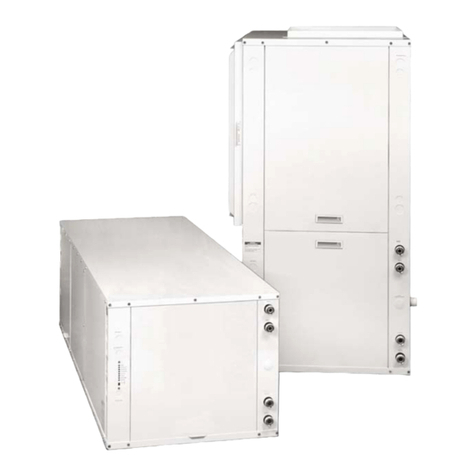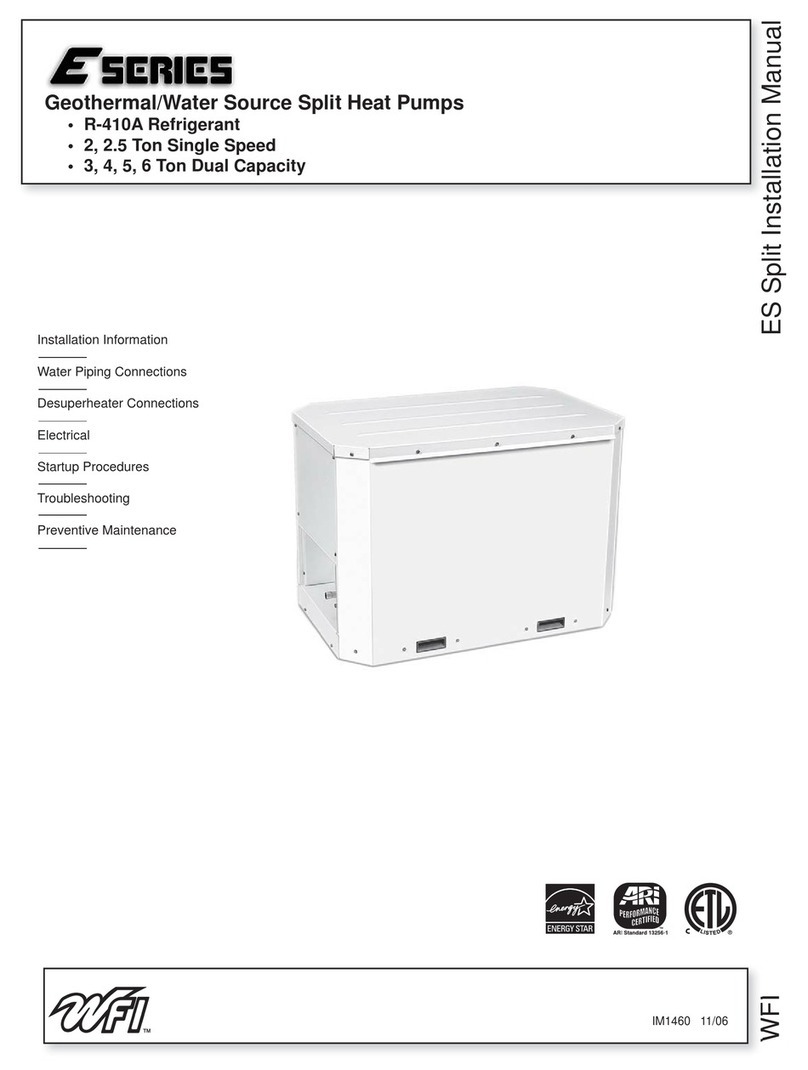
3
EKW FX10 INSTALLATION MANUAL
Table of Contents
General Installation Information.............................................4
Accessories & Other Options ................................................5
Potable Water Systems ......................................................6-7
Open Loop Systems..............................................................8
Earth Coupled Systems.........................................................9
Electrical..............................................................................10
Dimensional Data, Physical Elements, Sound Data............ 11
Electrical..............................................................................12
Small EKW Setup/Operation ..........................................13-14
1. Application Overview .......................................................15
2. Inputs and Outputs Conguration....................................15
3. Sequence of Operation....................................................16
3.1. Power Fail Restart.................................................16
3.2. Random Start Delay..............................................16
3.3. Compressor Fixed On Delay Time ........................16
3.4. Compressor Minimum On Delay ...........................16
3.5. Compressor Short Cycle Delay Time ....................16
3.6. Pump Sampling.....................................................16
3.7. Heating Cycle...................................................16-17
3.8. Cooling Cycle ........................................................17
3.9. Emergency Shutdown ...........................................17
3.10. Lockout Mode......................................................18
3.11. Entering Load Water Temperature (AI-1).............18
3.12. Leaving Load Water Temperature (AI-2) .............18
3.13. Entering Source Water Temp (AI-3) ....................19
3.14. Source Low Water Coil Temperature Limit (AI-4) .. 19
3.15. Load Low Water Coil Temperature Limit (AI-5) ...19
3.16. Entering Source Water Temp (AI-6) ....................19
3.17. Compressor Proving (BI-1)..................................19
3.18. Emergency Shutdown (BI-2) ...............................19
3.19. Low Pressure Switch (BI-3)................................19
3.20. Source Side Low Water Coil
Temperature Limit Select (BI-4)....................................19
3.21. Source Side Low Water Coil Temperature
Limit Selection (BI-5)....................................................19
3.22. Y1/System Enable Command (BI-7) ...................20
3.23. Source Flow Proving Switch (BI-8)......................20
3.24. Aqua-stat O/Heating-Cooling
Select Command (BI-9)................................................20
3.27. Load Flow Proving Switch (BI-12).......................21
4. Outputs............................................................................21
4.1. Reversing Valve (BO-1).........................................21
4.2. Compressor (BO-2)...............................................21
4.3. Reversing Valve (BO-3).........................................21
4.4. Secondary Unit Enable (BO-4)..............................21
4.5. Secondary Unit S-Plan Comfort Select
Enable (BO-5) ..............................................................21
4.6. Alarm Output (BO-6)..............................................21
4.7. Accessory Output 1/Source Pump
Control (BO-7)..............................................................22
4.8. Accessory Output 2/Load Pump
Control (BO-8)..............................................................22
Unit Startup..........................................................................23
ARI/ISO/BS EN Ratings ......................................................24
Capacity Data.................................................................25-40
Source Flow Rates (L/s)......................................................41
Pressure Drop (kPa)............................................................41
Troubleshooting...................................................................42
Preventive Maintenance......................................................43
Disposal/Recycling Section .................................................44





























